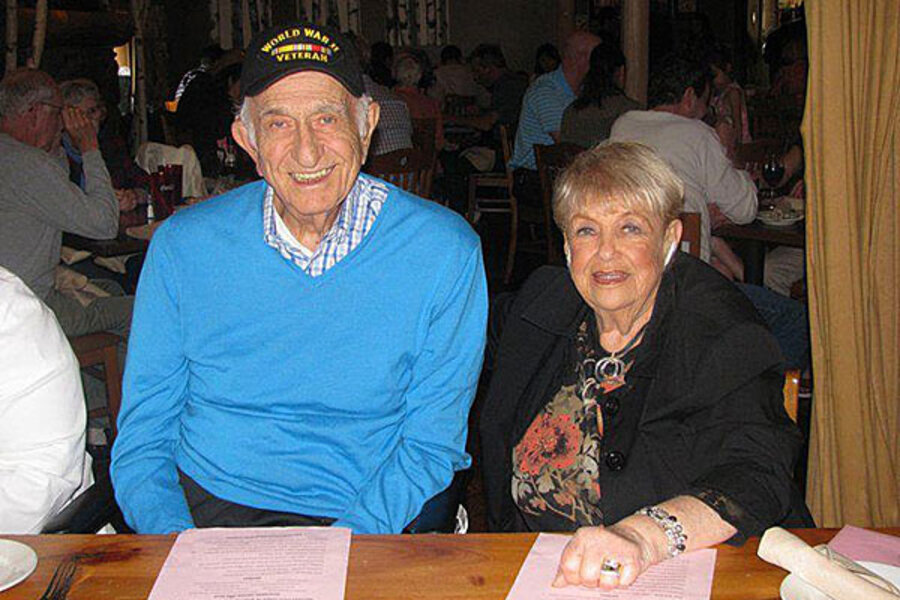Nathan Safferstein: Supermarket manager, atomic spy
Loading...
| New York
Nathan Safferstein was barely 21 when circumstances suddenly propelled him from his job as a supermarket manager into the stealth world of a counterintelligence agent on the project that produced the atomic bomb.
A customer at the Connecticut market had told her brother — an Army intelligence commander — about a bright young prospect. Soon, paperwork was filled out, recommendations made.
Wartime security being paramount, Safferstein eavesdropped on phone calls of scientists and engineers in Los Alamos, N.M., to make sure no Manhattan Project secrets were leaked, and delivered bomb-making uranium and top-secret messages. He also scrawled his signature on the first A-bomb, called "Little Boy," dropped on Hiroshima, Japan, on Aug. 6, 1945. A second bomb leveled Nagasaki on Aug. 9, and Japan surrendered six days later.
Safferstein died Tuesday night at his home in the Bronx after a long illness, his family said.
"We had that feeling right from day one that this was the instrument that was going to end this war," Safferstein said in a 2005 interview conducted by one of his sons, Michael, along with an oral history project moderator. "In my heart, I know that it saved us from the invasion of Japan and millions of casualties that would have come about."
The Washington-based National World War II Memorial online registry includes a photo of Lt. Gen. Leslie Groves, who ran the top-secret Manhattan Project at Oak Ridge, Tenn., and Los Alamos, presenting Safferstein with a Bronze Star medal after the war.
Safferstein, a native of Bridgeport, Conn., had been working as a supermarket manager in nearby Fairfield when his life took the extraordinary turn. One day, he was ordered to join about 100 other men in New York City's Grand Central Terminal.
"It seemed like a thing out of a Bond movie," he recalled years later. "We were all dressed in our Adam hats and cover cloth coats. ... Ten or 12 agents would drop off: Syracuse, Buffalo, Chicago. The train kept going west."
Safferstein's group disembarked in New Mexico. Two cars took them to a wooded area where they met Maj. Peer DeSilva, the laboratory's commander.
"He explained to us for the first time this ultra top secret mission, that they were working on a bomb that would be able to dig a hole into the ground some 80 to a hundred feet deep and perhaps 5, 10 miles long. And that from this point on, you are in the Manhattan Project," Safferstein recalled.
Most of Safferstein's activities remained a mystery to his family and friends, including his future bride, Bernice Klein.
Duty later called Safferstein to the Mariana Islands in the western Pacific, where U.S. forces had built airfields to launch long-range raids on Japan itself, and in mid-1945 the two bombs from Los Alamos had been secretly delivered by Navy ship.
About 12 hours before "Little Boy" was placed aboard the aircraft Enola Gay, a scientist appeared at a Quonset hut on the island of Tinian to make final adjustments.
He "explained the whole function of this bomb," Safferstein recalled. "And then he left and here I am alone with 'Little Boy.' And so I walked over to it, saw that there were some initials on it ... and added my signature to the bomb."
Though "extremely proud" to be part of history, Safferstein was not impervious to the ravages of war.
After the bombs were dropped, Safferstein accompanied a team that included U.S. doctors who surveyed the damage in Japan. Deeply moved by its "beautiful people," he recalled thinking: "Let's ... never have to use it again."
He said that after the war, Groves urged him to remain in counterintelligence, but he decided on civilian life. He returned to supermarkets, became president of Storecast Corp., a merchandising and marketing company, then started Long Island-based Supercast and its spinoff, In-Store Distributing.







